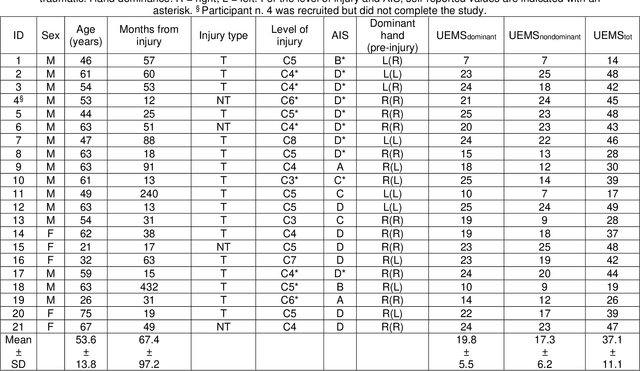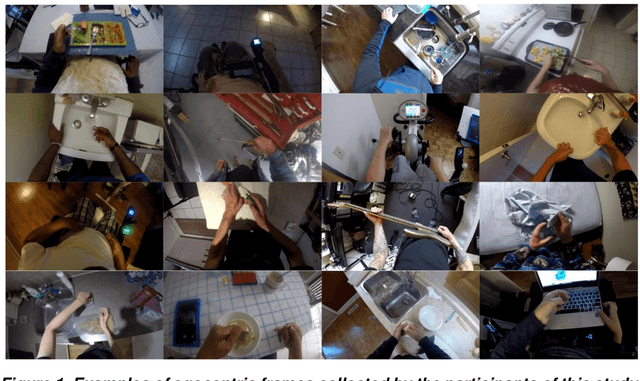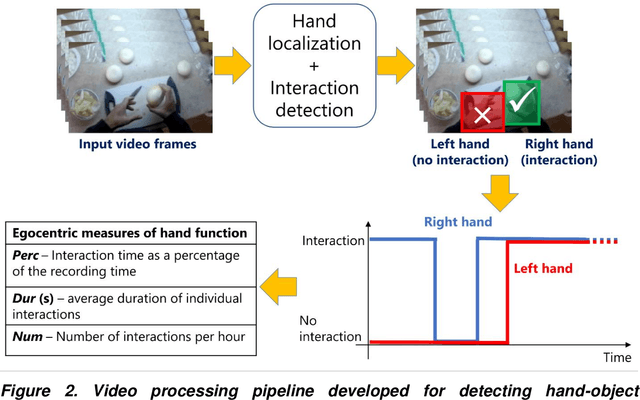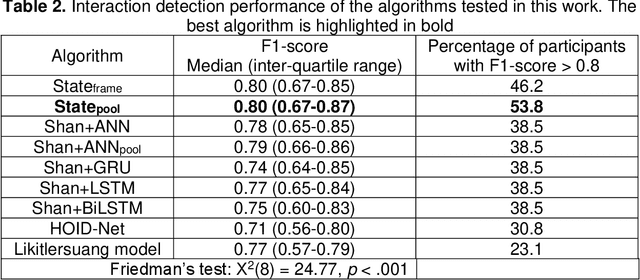Mehdy Dousty
A Personalized Video-Based Hand Taxonomy: Application for Individuals with Spinal Cord Injury
Mar 26, 2024Abstract:Hand function is critical for our interactions and quality of life. Spinal cord injuries (SCI) can impair hand function, reducing independence. A comprehensive evaluation of function in home and community settings requires a hand grasp taxonomy for individuals with impaired hand function. Developing such a taxonomy is challenging due to unrepresented grasp types in standard taxonomies, uneven data distribution across injury levels, and limited data. This study aims to automatically identify the dominant distinct hand grasps in egocentric video using semantic clustering. Egocentric video recordings collected in the homes of 19 individual with cervical SCI were used to cluster grasping actions with semantic significance. A deep learning model integrating posture and appearance data was employed to create a personalized hand taxonomy. Quantitative analysis reveals a cluster purity of 67.6% +- 24.2% with with 18.0% +- 21.8% redundancy. Qualitative assessment revealed meaningful clusters in video content. This methodology provides a flexible and effective strategy to analyze hand function in the wild. It offers researchers and clinicians an efficient tool for evaluating hand function, aiding sensitive assessments and tailored intervention plans.
Measuring hand use in the home after cervical spinal cord injury using egocentric video
Mar 31, 2022



Abstract:Background: Egocentric video has recently emerged as a potential solution for monitoring hand function in individuals living with tetraplegia in the community, especially for its ability to detect functional use in the home environment. Objective: To develop and validate a wearable vision-based system for measuring hand use in the home among individuals living with tetraplegia. Methods: Several deep learning algorithms for detecting functional hand-object interactions were developed and compared. The most accurate algorithm was used to extract measures of hand function from 65 hours of unscripted video recorded at home by 20 participants with tetraplegia. These measures were: the percentage of interaction time over total recording time (Perc); the average duration of individual interactions (Dur); the number of interactions per hour (Num). To demonstrate the clinical validity of the technology, egocentric measures were correlated with validated clinical assessments of hand function and independence (Graded Redefined Assessment of Strength, Sensibility and Prehension - GRASSP, Upper Extremity Motor Score - UEMS, and Spinal Cord Independent Measure - SCIM). Results: Hand-object interactions were automatically detected with a median F1-score of 0.80 (0.67-0.87). Our results demonstrated that higher UEMS and better prehension were related to greater time spent interacting, whereas higher SCIM and better hand sensation resulted in a higher number of interactions performed during the egocentric video recordings. Conclusions: For the first time, measures of hand function automatically estimated in an unconstrained environment in individuals with tetraplegia have been validated against internationally accepted measures of hand function. Future work will necessitate a formal evaluation of the reliability and responsiveness of the egocentric-based performance measures for hand use.
 Add to Chrome
Add to Chrome Add to Firefox
Add to Firefox Add to Edge
Add to Edge